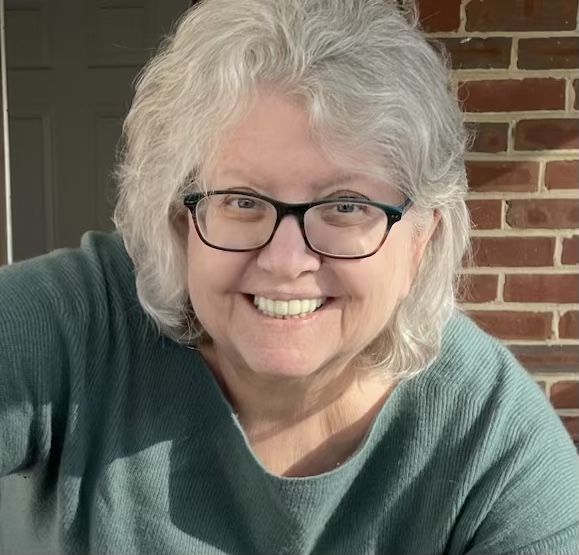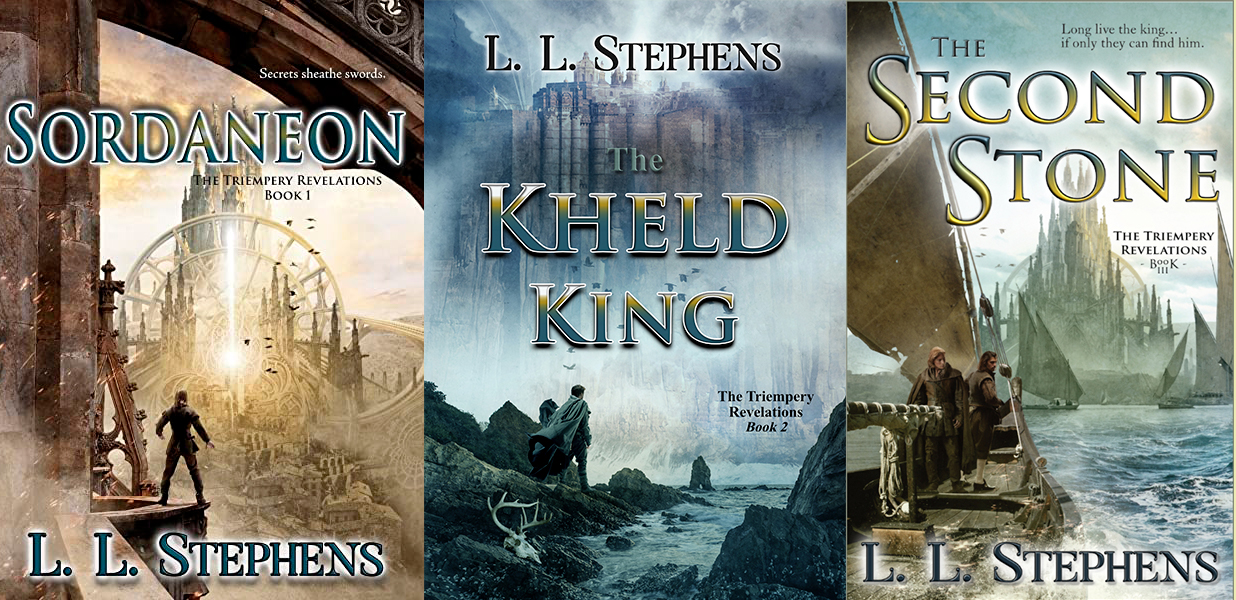March of the Sequels: L.L. Stephens
10 Mar 2023The Author/s

L.L. Stephens
L.L. Stephens is a pen name. The author is somewhat along in years and has enjoyed—let’s just call it that—a long career as a published author. Her first book was published by DAW when she was 29 and an editor at DAW encouraged her to write Sordaneon as an entry point into her Triempery series. But then life happened. (It was ugly.)
When L.L. (her real initials) could not find an agent in the 2000s she had modest publishing success as a writer of erotic romances. Giving up on ever snagging an agent for her series (few things are more painful than being an older author trying to land an agent), L.L. accepted an invitation from a small independent press, Forest Path Books, to publish the series—which by that point had been fully written. Of course she accepted: nothing is making L.L. happier than seeing her hard work being discovered and embraced by readers.
The Interview
First of all, tell me a little about your series and introduce us to the sequel(s).
The Triempery Revelations is set in a primary world (I refuse to call the world of the Triempery secondary because it IS the primary world according to my reimagined universe) called the Creation. The Creation is under threat from a nemesis that long ago destroyed it–the Triempery is part of the Second Creation–and is trying to destroy it again. The inhabitants of the Second Creation know part of their story but not the whole story and must grapple with the emergence of this enemy.
The series begins with Sordaneon, which introduces the Triempery–a confederation of empires–at very close to its height. It also shows the beginning of what might be its end. Dorilian Sordaneon is the godborn prince of the title, but he’s a far cry from a savior. The man he perceives to be his enemy, Marc Frederick, may be that savior, but only if he can save Dorilian–because Dorilian is tied to one of the Triempery’s two mighty Entities and may someday be able to use his Entity, the Rill, against a rising enemy.
The sequels continue the story arcs. The Kheld King takes readers into what happens after the events at the climax of Sordaneon. Marc Frederick’s empire, Essera, crumbles and its Entity, the Time-spanning Wall, is endangered. Dorilian, meanwhile, is also under assault from all sides, especially from Marc Frederick’s heir, Stefan, whose unreasonable hatred of Dorilian may prove to be both their downfalls. As Dorilian seeks to develop his godborn powers, he discovers how deadly they can be–to him. An even greater threat awaits both the humans and the Entities. An enemy named Nammuor has claimed the remnant of the slain god that once destroyed the Creation–and is now striving to finish it off.
Next month, in April, will see the publication of The Second Stone. This book picks up immediately after The Kheld King and introduces Hans, Stefan’s brother. Hans has literally been hidden away outside of the Second Creation by a mysterious immortal named Marenthro. Young, idealistic, and more than a little naive about his home world and its problems, Hans is a reluctant heir, but he follows Marenthro’s guidance. He returns to the Triempery and seeks out Stefan’s greatest enemy: Dorilian Sordaneon, the lone surviving godborn prince. Dorilian, for his part, is being hunted by Nammuor and already has more problems than he can handle. Will he be willing to take on one more?

Do you find that most of your readers continue to read the whole series? Why do you think that is?
I find it gratifying and quite wonderful how many readers who enjoyed Sordaneon then go on to read The Kheld King. Not everyone will enjoy this story to that degree, but those who do have continued to follow my social media posts and comment, and let me know they look forward to The Second Stone. Nothing makes me happier than knowing my story is finding its audience and that audience is gradually growing as the books find new readers.
I think the readers who fall in love with this series are those who enjoy deep worldbuilding and lore, complex fully realized characters, and clashes between personalities as well as cultures or societies. These readers will also appreciate how the characters and societies in this series change and grow–or don’t. It’s a very human story, full of failure and misjudgment, but also with moments of triumph. They also like that it’s not all grim; there are flashes of humor, insights that pull things in surprising directions, deep friendships, happy marriages, warm family scenes, cooks, scholars, and meddling immortals.
How difficult is it to add new characters in a sequel into already established relationships?
I have never had a problem with that. For one thing, I wrote the later books in my series first. I wrote Sordaneon and The Kheld King AFTER, so I was mostly fitting new characters in a prequel into established relationships. I brought to life characters who were already dead in the later books and gave them full lives. That was sometimes tough, because there were occasions where I wanted to keep characters alive but couldn’t. I had to kill them. But it also happened that writing those two books created new characters I then had to fit into the later books. That was also a bit tricky, but I didn’t really find it too difficult. My characters have very fully realized lives, with room to include new family members or outside relationships.
Is it difficult to continue with worldbuilding for a world you have already built in book 1? Do you find it easier to switch locations for the sequel and start again with worldbuilding?
I built the world of Sordaneon (Book 1) to give readers a look at what the Triempery was BEFORE. Before the later books, where the characters are dealing with the wreckage and trying to fashion it into a workable vehicle to use against a powerful enemy. So it was a joy to write Sordaneon and show that earlier world, with its Entities intact and its structures all shiny and powerful. Destroying that Triempery was what The Kheld King was all about.
I do switch locations in the series, mostly to introduce readers to aspects of the world they wouldn’t otherwise see. In The Kheld King, readers get a glimpse of Sordan in more detail; in The Second Stone, they meet the pirate-descended free folk of Trongor. In Book 4, The God Spear (2024), readers will get to see Amallar and the Khelds up close and very personal, in far more detail than before.
In terms of worldbuilding, though, it’s all part of the same fabric. I don’t really start new worldbuilding. I add to or fill in pieces of the design.
Have you ever been stymied by a worldbuilding or plot detail from book 1 that is very inconvenient to deal with or write your way around in subsequent books?
The most inconvenient thing has been that Nammuor’s Diadem is so powerful. The god remnant is so immensely powerful I’ve needed to find ways to blunt that power in terms of Nammuor’s ability to use it. It makes sense that as a mere mortal, a creature of ordinary flesh, Nammuor cannot wield the full power of the Diadem, especially once he has enhanced it with immortal blood crystals. The Diadem is capable of more destruction than Nammuor can deliver without destroying himself. But he keeps trying, you know. He is under compulsion. But I have to balance that very carefully. Nammuor gets really wiped out by some of what he uses the Diadem to do.
You’ve recently published a novelette, Blood Moon and Salt Flowers, ambient in Peru. Why did you choose that location?
I spent a lot of time in Bolivia as a young adult. I married a Bolivian man and it was his mother, Elena, and her family who introduced me to the folklore and people of the Altiplano. His mother would take me to the Witches Market in La Paz (which also makes an appearance in The Second Stone) and the old church in Laja which was built by the conquistadors (the church’s statue of Santiago inspired the medal a woman gives Hans in The Second Stone). We went to Copacabana and the Isla del Sol in Lake Titicaca. I made multiple visits to Tiwanaku and its Pre-Columbian ruins. Elena also translated for me when I wanted to speak with people in Aymara. I was enthralled by the culture and history and, of course, the wonderful people.
I hoped to pay respect to that culture and region when I wrote Moon Blood and Salt Flowers. I wanted to capture the blend of indigenous cultures, the collision between Christianity and indigenous beliefs, and the history of Cerro Rico de Potosi, which played such an important role in the Spanish Empire and world economics.
At the time of the story, 1576, the Bolivian Altiplano and Potosi were part of the Viceroyalty of Peru.
Would you say your craft has improved with the subsequent books?
Oh yes. I would hope an author never stops improving!
Do you have all the timeline planned for the full series?
In this case, the Triempery Revelations series is fully written. All six books; over a million words, all in hard copy and files. I’m editing the books and my lovely publisher, Forest Path Books, is releasing them on a schedule. The timeline is simply how long it takes to edit each book and how much it will cost to produce the books.
Do you have any marketing tips for sequels?
Alas, no. I’m a total neophyte at marketing books, so if anyone has good ideas on how to market sequels or a series or–books!--let me know. I’m reading these posts looking for tips.
